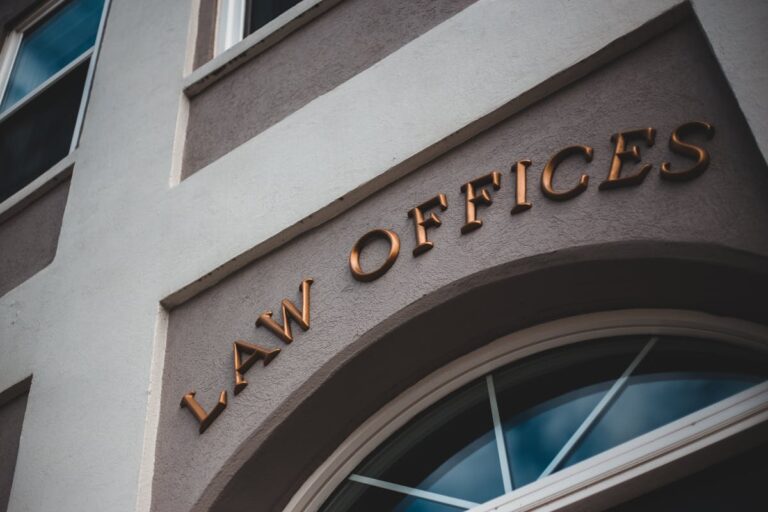Workplace Gossip Harassment: When Office Talk Becomes Illegal Under Employment Law
Workplace gossip becomes illegal harassment when it targets protected characteristics like race, gender, age, disability, or religion, or when it creates a hostile work environment that interferes with your ability to do your job. While casual office chatter about weekend plans or workplace changes typically falls under normal social interaction, malicious gossip that discriminates against protected classes or creates severe, pervasive harassment crosses into illegal territory under federal employment law.
Understanding this distinction is crucial because workplace gossip affects 58% of employees weekly, with 30% experiencing it daily. Employees spend approximately 40 minutes weekly engaging in gossip – that’s over 30 hours annually per person. When this behavior targets your protected characteristics or creates conditions so hostile that your work performance suffers, it violates federal employment laws enforced by the Equal Employment Opportunity Commission (EEOC). At our firm, we help employees recognize when office gossip has crossed legal boundaries and guide them through the documentation and reporting process to protect their rights.
What Makes Workplace Gossip Illegal Harassment?
For workplace gossip to carry legal liability, it must meet specific federal standards that distinguish casual conversation from actionable harassment. The gossip becomes illegal when it creates a hostile work environment based on discrimination targeting protected characteristics such as sex, race, ethnicity, disability, religion, age, pregnancy status, or sexual orientation. The harassment must be severe or pervasive enough to interfere with your job performance or fundamentally change the conditions of your employment.
The legal threshold isn’t just about hurt feelings or office drama. Federal courts apply an objective standard, asking whether a reasonable person in your position would find the work environment hostile or abusive. This means isolated incidents of gossip typically won’t meet the legal standard unless they’re extremely severe, but ongoing patterns of discriminatory gossip can absolutely create legal liability for employers.
Protected Characteristics That Make Gossip Actionable
Federal law protects specific characteristics from workplace harassment, and gossip targeting these areas can create legal claims:
- Race and ethnicity: Spreading rumors based on racial stereotypes or making derogatory comments about someone’s cultural background
- Gender and sex: Sexual rumors, gossip about appearance, or comments reinforcing gender stereotypes
- Disability: Mocking physical or mental disabilities, spreading rumors about medical conditions, or discussing accommodation needs inappropriately
- Religion: Comments about religious practices, holidays, or beliefs used to create a hostile environment
- Age: Rumors suggesting older workers are incompetent or younger workers are inexperienced based solely on age
- Pregnancy: Gossip about pregnancy plans, fertility struggles, or assumptions about career commitment
- Sexual orientation and gender identity: Spreading rumors or making derogatory comments about LGBTQ+ employees
Hostile Work Environment Standards for Gossip
Courts evaluate whether gossip creates a hostile work environment by examining both the severity and pervasiveness of the behavior. A single extremely offensive incident might meet the legal standard, but more commonly, courts look for patterns of ongoing discriminatory gossip that make the workplace hostile or abusive. The behavior must be unwelcome and must unreasonably interfere with your work performance or create an intimidating work environment.
Examples of Workplace Gossip That Crosses Legal Lines
Understanding specific scenarios helps you recognize when workplace gossip becomes legally actionable harassment. These examples demonstrate how seemingly casual conversations can violate federal employment law.
Sexual Rumors and Gender-Based Gossip
Sexual harassment through gossip often involves spreading rumors about employees’ personal relationships, appearance, or sexual behavior. Examples include circulating stories about who someone is dating, making comments about clothing choices that reinforce gender stereotypes, or spreading rumors about sexual orientation. When coworkers consistently gossip about a female employee’s appearance or spread rumors about her personal relationships while treating male colleagues’ personal lives as off-limits, this creates gender-based harassment.
Racial Stereotypes and Ethnic Gossip
Racially discriminatory gossip might involve spreading rumors that reinforce harmful stereotypes about work ethic, intelligence, or cultural practices. This includes comments like suggesting employees of certain backgrounds received jobs through affirmative action rather than qualifications, or making assumptions about communication skills based on accents or names. Even seemingly “positive” stereotypes can create hostile environments when they reduce individuals to racial generalizations.
Disability-Related Gossip and Mocking
Disability harassment through gossip often involves discussing someone’s medical conditions, mocking physical differences, or spreading rumors about mental health. This includes gossiping about why someone uses accommodations, speculating about invisible disabilities, or making jokes about medical leave. The Americans with Disabilities Act specifically protects against this type of harassment.
Age, Religion, and LGBTQ+ Gossip
Age-related gossip might involve comments about retirement plans, technology skills, or assumptions about flexibility based solely on age. Religious harassment can include gossip about religious practices, holiday observances, or dietary restrictions. LGBTQ+ harassment often involves speculation about personal relationships, inappropriate questions about gender identity, or spreading rumors about sexual orientation.
How Workplace Gossip Impacts Employees and Organizations
Research demonstrates that workplace gossip harassment creates significant consequences extending far beyond momentary discomfort. Understanding these impacts helps explain why federal law takes workplace harassment seriously and why documentation becomes so important for legal claims.
Mental Health and Psychological Effects
Studies show workplace harassment including gossip creates substantial mental health impacts with strong correlations to anxiety (r = .40, p < .001), depression (r = .56, p < .001), and impaired social functioning (r = .34, p < .001). When you’re the target of workplace gossip harassment, you may experience increased stress, difficulty sleeping, loss of confidence, and social isolation at work. These psychological effects can persist long after the gossip stops and may require professional mental health support.
The constant worry about what others are saying creates chronic stress that affects your immune system, concentration, and overall well-being. Many employees report feeling paranoid or anxious about workplace interactions, which fundamentally changes their work experience and can impact their career progression.
Productivity Loss and Workplace Trust Erosion
Beyond individual impacts, workplace gossip harassment affects organizational productivity and culture. Research indicates that 47% of employees report gossip creates tension and distrust in their workplace. When harassment goes unaddressed, it normalizes discriminatory behavior and creates toxic workplace cultures where protected class members feel unwelcome or unsafe.
Organizations face decreased productivity as employees spend time dealing with harassment rather than focusing on work tasks. Team collaboration suffers when trust breaks down, and high-performing employees may leave rather than tolerate hostile environments. This creates recruitment costs, knowledge loss, and reputation damage for employers.
Recognizing Signs of Workplace Gossip Harassment
Identifying when workplace gossip crosses into harassment territory requires understanding both obvious and subtle indicators. Early recognition helps you document patterns and seek appropriate help before the situation escalates.
Early Warning Signs for Employees
You might be experiencing gossip harassment if conversations stop when you enter rooms, if you notice coworkers whispering and looking in your direction, or if you hear secondhand reports about rumors involving your protected characteristics. Other warning signs include being excluded from informal workplace communications, receiving different treatment after gossip circulates, or noticing that the gossip consistently targets your race, gender, age, disability, or other protected characteristics.
Pay attention to whether the gossip affects your work relationships, creates anxiety about coming to work, or makes you feel unwelcome in your workplace. If you find yourself changing your behavior, avoiding certain areas or people, or feeling constantly stressed about what others might be saying, the gossip may have created a hostile work environment.
Red Flags for Managers and HR
Managers and HR professionals should watch for patterns indicating gossip has become harassment. Red flags include complaints about exclusion based on protected characteristics, reports of rumors targeting specific groups, decreased performance from previously successful employees, or increased absenteeism from certain workers. At our practice, we often see cases where early warning signs were ignored, allowing harassment to escalate into major legal liability.
How to Document and Report Workplace Gossip Harassment
Proper documentation creates the foundation for successful harassment claims and helps ensure employers take appropriate action. Understanding what to document and how to report harassment protects your legal rights and helps create accountability.
Essential Documentation Requirements
Document every incident with specific details including dates, times, locations, and exact words used. Record who was present during gossip incidents, how you responded, and any witnesses who observed the behavior. Note how the gossip affected your work environment, relationships with colleagues, or job performance. Keep copies of any written communications related to the harassment, including emails, text messages, or social media posts.
Your documentation should focus on factual observations rather than interpretations or emotions. Instead of writing “John was being racist,” document “John said [specific words] about my ethnic background in front of three coworkers in the break room on [date].” This factual approach strengthens your case and helps investigators understand exactly what occurred.
Reporting Procedures and Investigation Process
Most workplace harassment policies require reporting to your supervisor, HR department, or designated complaint handler. If your supervisor is involved in the harassment, report to HR or the next level of management. Many companies provide multiple reporting channels, including hotlines or online systems, to ensure employees can report harassment safely.
Once you file a complaint, employers should begin investigating within 2-3 business days and complete most investigations within 7-10 business days. During this process, continue documenting any retaliation or ongoing harassment. Remember that retaliation for filing harassment complaints is illegal under federal law and represents nearly 48% of all EEOC discrimination complaints.
Legal Consequences and Remedies for Workplace Gossip Harassment
Understanding potential legal outcomes helps you make informed decisions about pursuing harassment claims and demonstrates to employers the serious consequences of failing to address workplace harassment.
Employer Liability and EEOC Enforcement
Employers face significant legal liability when workplace gossip creates hostile environments based on protected characteristics. The EEOC recovered $469.6 million for discrimination victims in 2024, with federal courts awarding more than $39 million in settlements and judgments for employment discrimination cases in 2022. Employers may be liable for harassment by supervisors, coworkers, or even customers when they knew or should have known about the harassment and failed to take appropriate corrective action.
Courts evaluate employer liability based on whether companies had effective harassment policies, provided adequate training, conducted thorough investigations, and implemented appropriate remedies. Companies that ignore gossip harassment or retaliate against complainants face enhanced liability and punitive damages.
Employee Rights and Available Remedies
If you experience workplace gossip harassment, you have several legal options depending on your situation. Remedies may include back pay for lost wages, front pay for future losses, compensatory damages for emotional distress, punitive damages in cases of intentional discrimination, and injunctive relief requiring employers to change policies or provide training.
You also have the right to file complaints with the EEOC within 180-300 days of the harassment, depending on your state. The EEOC investigates complaints and may file lawsuits on behalf of employees or issue right-to-sue letters allowing private legal action.
Preventing Workplace Gossip Harassment: Policies and Best Practices
Effective prevention requires comprehensive policies, consistent enforcement, and cultural change that makes harassment unacceptable in workplace environments.
Essential Policy Components
Strong harassment policies specifically address gossip and rumor-spreading as potential forms of harassment. Policies should define prohibited conduct clearly, provide multiple reporting channels, guarantee non-retaliation, and outline investigation procedures with specific timelines. California law mandates two hours of harassment prevention training for supervisors, with specialized training for complaint handlers.
Effective policies also address social media and remote work environments where gossip harassment increasingly occurs. With remote work becoming more common, companies must address digital harassment through video calls, chat platforms, and social media interactions that affect workplace relationships.
Training and Cultural Change Strategies
Regular training helps employees understand harassment policies and creates cultures where discriminatory gossip is unacceptable. Training should include specific examples of gossip harassment, reporting procedures, and consequences for violations. Leadership must model appropriate behavior and address gossip harassment promptly to demonstrate organizational commitment to inclusive workplaces.
When to Consult an Employment Attorney
Consider consulting an employment attorney if your employer fails to investigate harassment complaints, if you experience retaliation for reporting, or if the harassment continues despite reporting. Legal consultation is also advisable if you’re considering leaving your job due to harassment, as you may have claims for constructive discharge.
Get Legal Help for Workplace Gossip Harassment
Workplace gossip harassment can seriously impact your career, mental health, and financial security. When office talk targets your protected characteristics or creates a hostile work environment, you have legal rights that deserve protection. Don’t let discriminatory gossip force you out of your job or damage your professional reputation.
At Longo Law Firm, we understand the complex intersection between workplace dynamics and employment law. We help employees document harassment, navigate reporting procedures, and pursue legal remedies when employers fail to address discriminatory gossip. Our experienced employment attorneys know how to build strong harassment cases and fight for the compensation and workplace changes you deserve. Contact us today at (212) 555-7890 or fill out our contact form to discuss your workplace gossip harassment situation and learn about your legal options.






